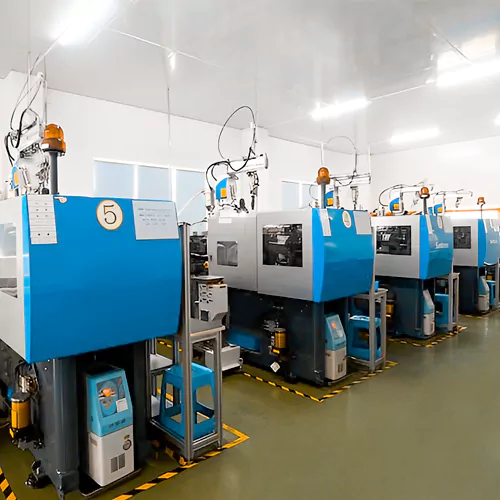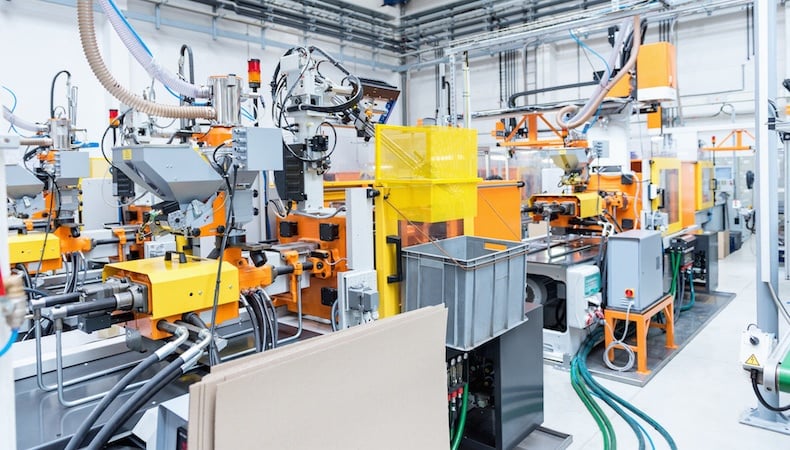The Function of Plastic Injection Molding in Producing Affordable Industrial Parts
The Function of Plastic Injection Molding in Producing Affordable Industrial Parts
Blog Article
Understanding the Basics of Plastic Shot Molding Processes
Plastic injection molding serves as a foundation of modern-day production, supplying a methodical technique to creating complicated parts with accuracy. Exploring these essential elements could disclose just how even minor changes can lead to substantial renovations in production outcomes, raising questions concerning the capacity for advancement in this well-known procedure.
What Is Plastic Shot Molding?
Plastic shot molding is a widely made use of manufacturing process that changes polycarbonate and thermosetting products right into exact and complex forms. This technique is favored for its capacity to produce high quantities of identical components with remarkable precision, making it an essential approach in numerous markets, consisting of automobile, durable goods, and clinical devices.
The procedure involves thawing the picked plastic material and infusing it right into a mold and mildew under high pressure. The mold, created to the specifications of the preferred part, enables the liquified plastic to materialize as it cools down and solidifies. Once the material has solidified, the mold and mildew is opened, and the completed part is expelled.
Plastic shot molding provides numerous benefits, consisting of lowered waste, consistency in production, and the ability to include elaborate layouts that might be testing with various other making methods. Additionally, it supports a broad series of materials, each offering special buildings that can be tailored for particular applications. As markets proceed to introduce, plastic injection molding remains at the forefront, enabling the development of innovative items that fulfill advancing customer needs.
The Injection Molding Process
The shot molding procedure is an innovative method that includes a number of vital phases to produce high-grade plastic components. Initially, plastic pellets are fed right into a heated barrel where they are thawed right into a thick liquid. This molten plastic is then infused under high stress right into a precision-engineered mold, which shapes the material right into the preferred type.
Once the mold is filled, the plastic is permitted to strengthen and cool down, taking the form of the mold dental caries. Cooling time is critical, as it affects the cycle time and the last buildings of the shaped part. After sufficient air conditioning, the mold and mildew opens up, and the completed part is ejected utilizing ejector pins.

Products Used in Injection Molding
Different materials can be utilized in the injection molding procedure, each offering one-of-a-kind homes that deal with specific applications. The most typically used materials include thermoplastics, thermosetting plastics, and elastomers.
Thermosetting plastics, like epoxy and phenolic materials, undertake a chemical adjustment throughout the treating process, causing a stiff, stringent structure. These materials are ideal for applications needing high heat resistance and structural integrity, usually used in vehicle parts and electrical insulators.
Elastomers, consisting of silicone and rubber-based products, offer adaptability and durability. Their one-of-a-kind buildings make them ideal for applications that demand elasticity, such as gaskets and seals.
Furthermore, specialized materials like bio-based plastics and composites are getting grip for their ecological benefits and enhanced efficiency features, broadening the scope of injection molding applications in numerous sectors. Understanding the homes of these products is crucial for choosing the proper kind for particular projects.
Advantages of Injection Molding
Injection molding sticks out as an extremely efficient manufacturing procedure that offers various benefits for producing complex parts with accuracy. Among the most substantial advantages is the capacity to produce elaborate styles that would certainly directory be tough or impossible to achieve with various other methods (Plastic Injection Molding). The process enables in-depth functions and tight resistances, making certain top quality elements
Additionally, shot molding is known for its fast production capacities, making it a perfect selection for high-volume production. Once the mold and mildew is created, components can be created rapidly, reducing preparations and increasing total efficiency. This performance not only lowers production prices however additionally provides a competitive edge out there.
The adaptability of products utilized in shot molding additionally improves its charm. A wide variety of thermoplastics and thermosetting polymers can be used, enabling manufacturers to choose products that finest meet their certain requirements, including stamina, warmth, and flexibility resistance.
Moreover, the process lessens waste, as excess material can commonly be recycled and reused. This sustainability aspect adds to a decreased ecological influence, making shot molding an accountable manufacturing choice. Generally, the benefits of shot molding make it a favored technique for several industries.
Factors Affecting Product High Quality
While many variables can affect product high quality in injection molding, comprehending these components is critical for attaining optimal outcomes. Trick aspects include product selection, processing parameters, and mold and mildew design.
Material selection plays an important role, as different polymers display special read the full info here properties that influence flowability, toughness, and thermal security. Poor product option can lead to problems such as bending or insufficient dental filling.
Handling criteria, including temperature, pressure, and cycle time, need to be carefully managed. Variations in these setups can lead to variances in component dimensions and surface coating. For circumstances, exceedingly high temperature levels may cause deterioration of the polymer, while insufficient pressure can cause short shots.
Mold design is just as important, as it identifies the circulation of the molten plastic and the cooling process. find out Inadequately made molds may lead to irregular air conditioning rates, causing residual stresses and dimensional errors.

Final Thought
In final thought, plastic injection molding acts as an important production procedure that enables the efficient production of premium elements. Mastery of the shot molding procedure, consisting of the understanding of materials and the influence of various aspects on product quality, is important for achieving optimum outcomes. The advantages of this technique, such as cost-effectiveness and style adaptability, further highlight its value across numerous markets, solidifying its status as a recommended selection for high-volume production.
Plastic injection molding offers as a keystone of contemporary production, giving a methodical method to creating complex parts with accuracy.Plastic injection molding offers several benefits, including reduced waste, consistency in manufacturing, and the capability to incorporate complex layouts that might be challenging with various other manufacturing approaches (Plastic Injection Molding). As sectors proceed to innovate, plastic shot molding remains at the center, making it possible for the advancement of innovative products that satisfy evolving customer demands
The shot molding process is an innovative method that involves a number of vital stages to generate top notch plastic components.In final thought, plastic shot molding offers as a vital production process that makes it possible for the efficient manufacturing of top notch components.
Report this page